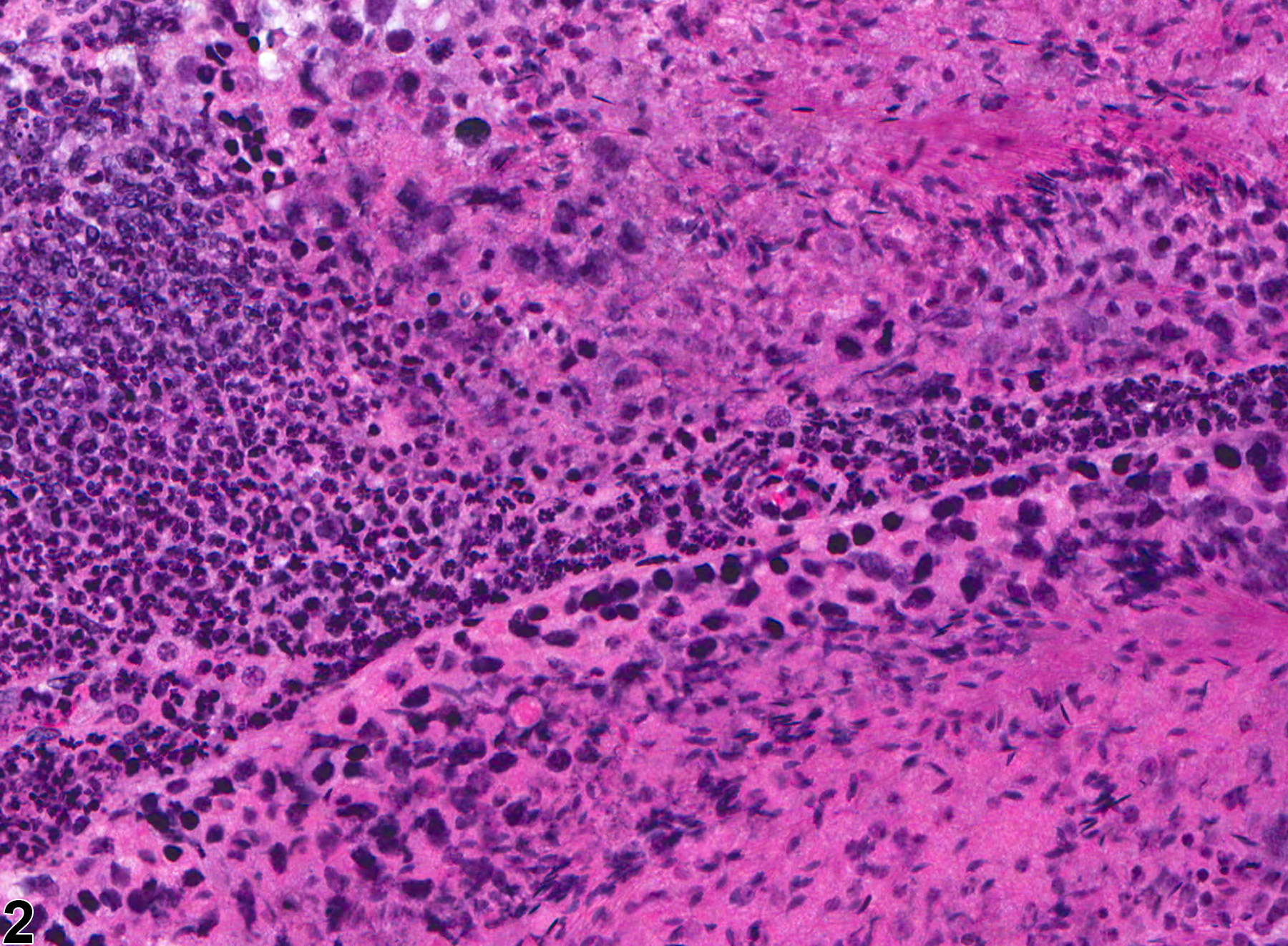Reproductive System, Male
Testis - Inflammation
Narrative
NTP studies have five standard categories of inflammation: acute, suppurative, chronic, chronic-active, and granulomatous. In acute inflammation, the predominant infiltrating cell is the neutrophil, thoughfewer macrophages and lymphocytes may also be present. There may also be evidence of edema orhyperemia. The neutrophil is also the predominant infiltrating cell type in suppurative inflammation, but they are aggregated, and many of them are degenerate (suppurative exudate). Cell debris from both the resident cell populations and infiltrating leukocytes, proteinaceous fluid containing fibrin, fewer macrophages, occasional lymphocytes or plasma cells, and, possibly, an infectious agent may also be present within the exudate. Grossly, these lesions would be characterized by the presence of pus. The tissue surrounding the exudate may have fibroblasts, fibrous connective tissue, and mixed inflammatory cells, depending on the chronicity of the lesion. Lymphocytes predominate in chronic inflammation. Lymphocytes also predominate in chronic-active inflammation, but there are also a significant number of neutrophils. Both lesions may contain macrophages. Granulomatous inflammation is another form of chronic inflammation, but this diagnosis requires the presence of a significant number of aggregated, large, activated macrophages, epithelioid macrophages, or multinucleated giant cells.
Creasy DM, Foster JR, Foster PM. 1983. The morphological development of di-n-pentyl phthalate induced testicular atrophy in the rat. J Pathol 139:309-321.
Abstract: http://www.ncbi.nlm.nih.gov/pubmed/6834175Granholm T, Creasy DM, Pöllänen P, Söder O. 1992. Di-n-pentyl phthalate-induced inflammatory changes in the rat testis are accompanied by local production of a novel lymphocyte activating factor. J Reprod Immunol 21:1-14.
Abstract: http://www.ncbi.nlm.nih.gov/pubmed/1734074
Testis - Inflammation in a male B6C3F1 mouse from a chronic study. Acute inflammation of the testis.



